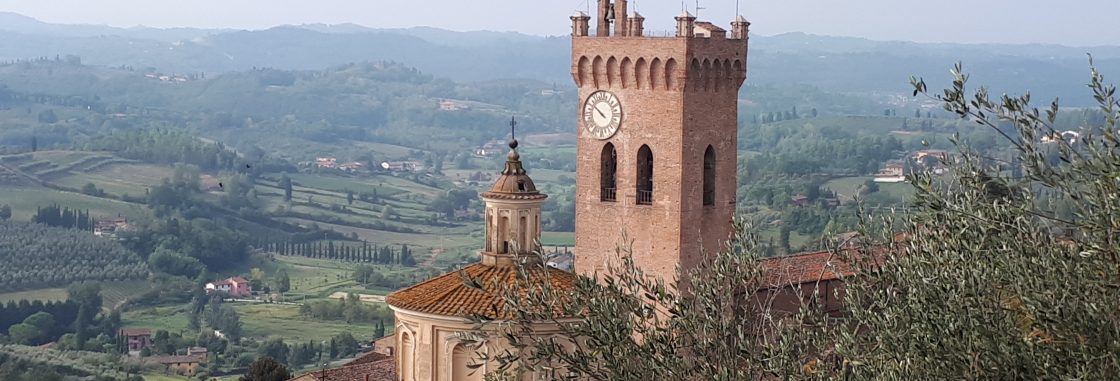The Tower of Frederick II, called the Fort, is the landmark of the town. It is a 37-metre tall tower, built by Frederick II of Swabia in 1217 and was the central core of the Imperial defensive system. From its top it was possible to control the Arno Valley as far as Volterra hills, the Apennines and the sea.
Frederick Barbarossa and his grandson, Frederick II of Swabia, chose San Miniato as the seat of the Imperial financial administration for central Italy and Tuscia because the town was situated near important cities such as Florence, Volterra, Lucca and Pisa and on the famous Via Francigena, which was the main connecting route between Northern Europe and Rome in the Middle Ages.
Frederick II used the tower as a political prison and imprisoned priests, cardinals, nobles here.
Pier delle Vigne, Frederick II’s Chancellor, was imprisoned in the Fort for treason until his death.
Pier delle Vigne (1190-1249) was a writer and a diplomat. was Frederick II‘s Secretary and Chancellor. He was charged with treason and imprisoned in the Fort in San Miniato in 1248. After a year in prison he was visited by the Emperor; he was unable to defend himself so the Emperor had his eyes ripped out.Unable to bear it, he committed suicide in the Fort.
Pier delle Vigne is mentioned in the “Divine Comedy by Dante Alighieri (13th“Canto”,“Inferno”). He reveals Dante and Virgil his identity saying “I am the man who held both the keys of Frederick’s heart…”. This means that Frederick II trusted him a lot. This sentence is written on a stone under the Fort in San Miniato.
The tower was destroyed during the Second World War and rebuilt in 1958. From its top you can admire the special ribbon-like layout of the town and a stunning landscape.

















































